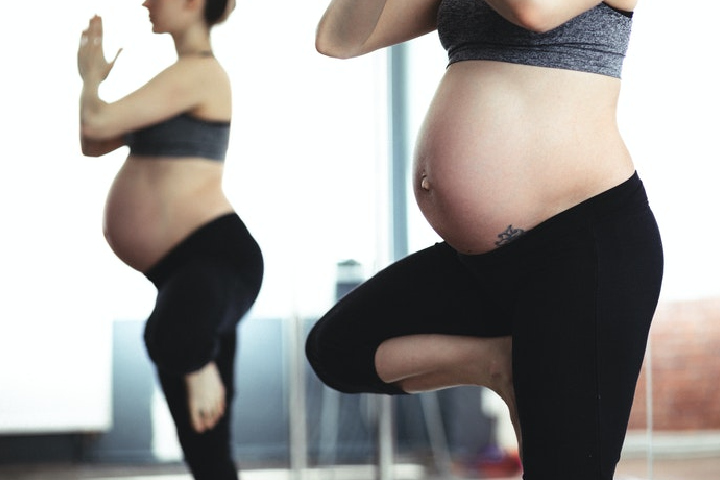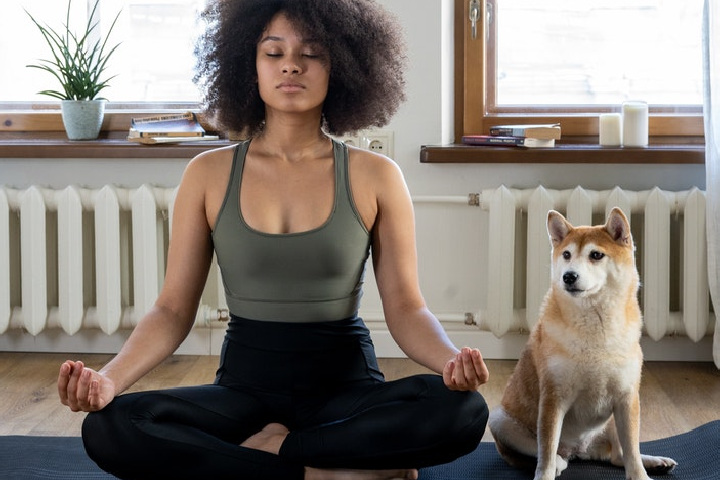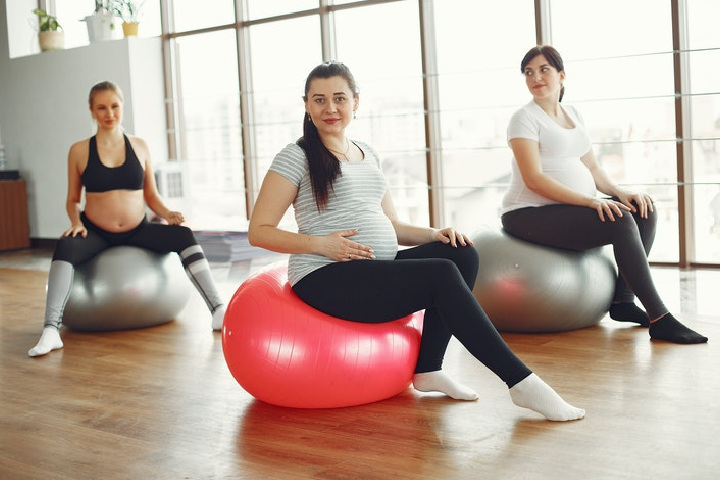Pregnancy: During pregnancy, a woman’s body undergoes transformations that can cause discomfort. Yoga helps to alleviate them and to adapt to changes.
The practise of yoga during pregnancy helps you concentrate more deeply to recognize resistance, energy levels, and bodily discomfort.
Also, yoga gives you the time and space you need to integrate the important changes that are taking place in you and helps you reflect and develop emotions and capacities to make you stronger in the face of new challenges.
Table of Contents
1. Physical and Mental Benefits of Yoga
In pregnant women, yoga enhances flexibility, elasticity, balance, and strength gently without causing fatigue, and at the same time, it favours the harmony of the body and the mind.
It helps develop the ability to concentrate and relax and recognize the benefits of breathing, generating renewed energy.
The first step to start on the path of yoga is to let yourself be guided, loosen, feel, and express emotions.
You have to look for comfort and harmony: remember that pregnancy is not the time to set yourself great challenges with your body and constantly and progressively adapt over nine months.
The real challenges you have to face are the changes in your body, birth, breastfeeding, and motherhood. Practising yoga will be of great help to you to achieve the necessary improvements to feel good.
2. How to Start Yoga if You Are Pregnant
It is always a good time to start practising yoga because you can adapt the practice to your time and your needs. You can vary the method according to your age, constitution, physical and mental health, physical form.

When starting to practice yoga while pregnant, the important thing is your motivation and awareness of your current personal moment, in what weeks of gestation you are, and the symptoms you have.
The great yogi Krishnamacharya recommended some precautions to pregnant women: suspend the practice in the first twelve weeks of gestation if they have nausea or reluctance, and if there is a risk of miscarriage; avoid many postures that were done before pregnancy and modify and adapt postures at each moment of pregnancy.
3. Get Ready to Do Yoga
Before starting a yoga practice, you should keep the following in mind:
- I have done the digestion.
- Have a ventilated, spacious, and quiet place to practice.
- I am feeling neither hot nor cold.
- Wear comfortable clothes.
Get a yoga mat or a folded blanket, a pillow, and a chair or stool where you can sit if you need it.
You should consider other aspects: how you feel before starting the yoga practice; Are you tired? Irritated? Do you need to calm your mind?
Assess your symptoms, and if it’s late or you still have the whole day ahead of you.
4. Focus on the Breath
Before you begin, stretch or sit quietly to connect with your body and your breath. Watch how it flows without trying to make it different or change its rhythm.
Let it flow at its natural rate. This helps you direct your attention inwards and allows you to be more aware of the sensations, get in touch with your thoughts and emotions, learn to recognize your limits and work with the body with respect.
5. 5 Yoga Exercises for Pregnant Women
a. Focus on the Breath
This exercise can be finished at the beginning and the end. It consists of breathing, but it is not easy because you must try to close yourself to external stimuli and keep your attention in one direction for a while.

Put one hand on the chest and the other on the belly, and observe the movement generated in these parts of the body.
You can also location your hands on the rib cage’s sides, notice how it opens, and appreciate the sensations in the back.
Observe how the air enters through the nostrils, how it reaches the chest, and how the lungs fill. Observe how the ribs widen, the trunk’s sides, the back, and the belly, and how the air leaves your body again.
b. Stretches and Strengthens the Back
Uttanasana helps you stretch the lumbar and sacrum and reduce pressure on the pelvic floor. It also eliminates tension in the arms, shoulders, and neck.
This asana is normally performed standing, with the legs stretched out, but we can adapt in a sitting position.
- Sit up straight and find the opening point for your legs that makes you feel confident.
- Breathe in, stretch your arms in front of your body, and bring them over your head.
- Exhale and bend your torso forward until your hands can grip your ankles.
- Breathe in and sit up as you raise your arms in front of your body.
- Exhale and lower your arms slowly by your sides until they are next to your body.
c. Stimulates Intestinal Transit
Among other beneficial effects, Apanasana favours intestinal transit, which is often complicated in pregnant women. It also supports the balance of the lower abdomen.
Lying on your back, with your back close to the ground and your arms at the sides of your body, bend your knees and support your feet against the wall.
Your calves and thighs should be at a right angle. At all times, keep your legs comfortably apart, approximately hip-width apart.
Please put your hands gently on your knees and, as you breathe out, bring them closer to your chest. As you breathe in, bring your feet back into contact with the wall.
Do not tilt your head and check that the face and jaws are relaxed. Make sure that the chin is oriented towards the chest. In this position, it is better that you do not support it on a cushion.
Repeat 4 to 8 times and perform the movements slowly to loosen the lower back and sacrum.
d. Recognize Your Pelvic Floor
It is important to recognize the pelvic floor muscles. Knowing how to relax them favours the baby’s release. This exercise will help you with this recognition. It is also useful for preventing or treating haemorrhoids, a common problem in pregnant women.

- Get “on all fours” and lean forward until your forehead is on the ground.
- Consciously relax your pelvic floor muscles.
- As you breathe in, contract your anus. It will help you to visualize a tube that is closing. Focus on the sphincter and try not to constrict the urethra or vagina.
- Relax when you breathe out.
e. Room for the Lungs
This exercise opens the chest, making it easier to breathe. It also improves the back muscles’ mobility, loosens the cervical muscles, rests the legs, and relaxes the pelvic floor.
- Lying on the left side, with your legs bent in a fetal position, stretch your arms in front of your chest and, when you breathe in, bring your right arm back, turn your head in the same direction, and try to touch the ground.
- On exhaling, return to the starting position. Repeat four times and then switch sides. Finish lying on the right side, and rest.
- You can then sit on the floor with your back against the wall and your legs apart. Feel your pelvis rooted to the floor and twist your ankles to ease circulation.

